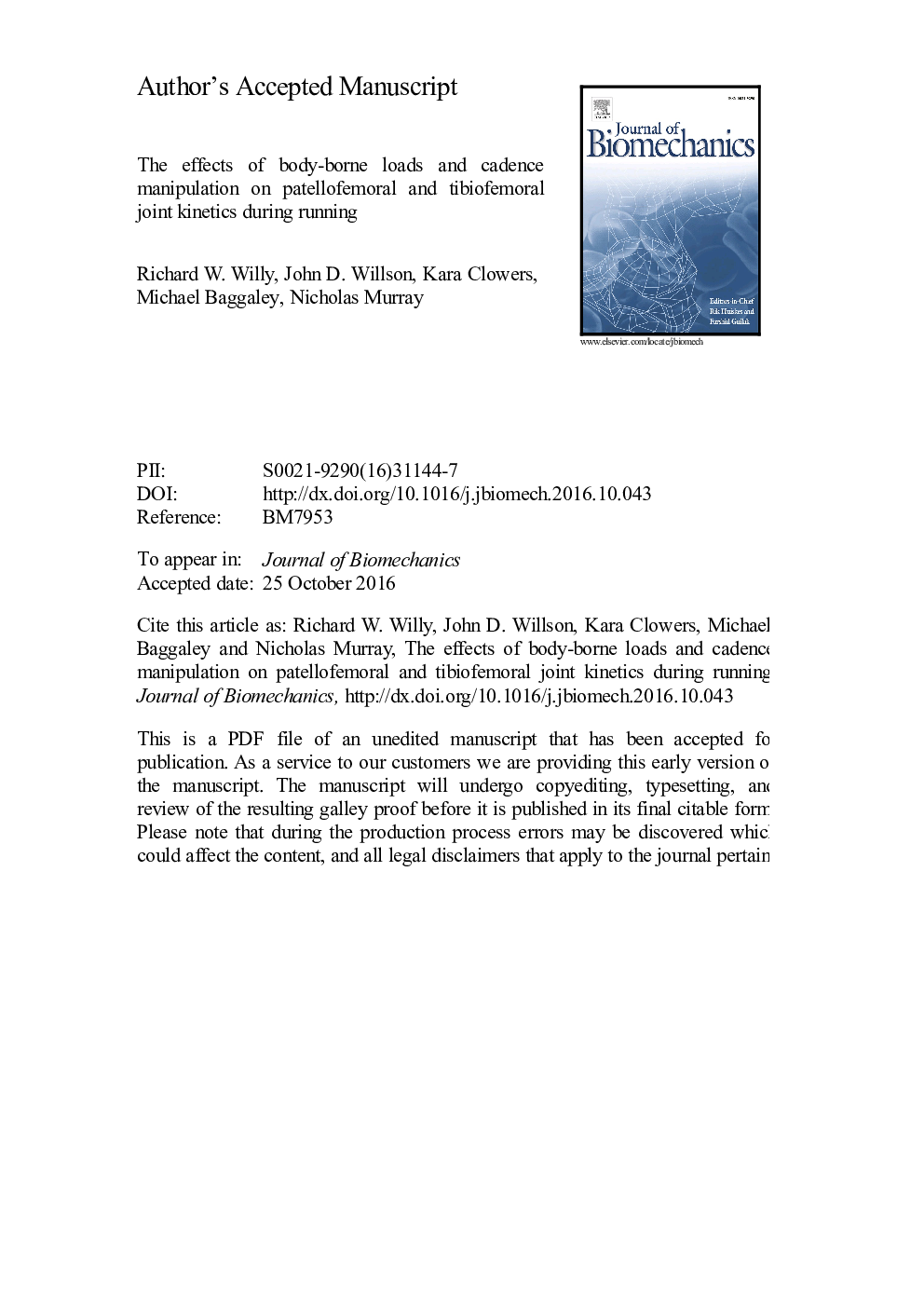| Article ID | Journal | Published Year | Pages | File Type |
|---|---|---|---|---|
| 5032309 | Journal of Biomechanics | 2016 | 23 Pages |
Abstract
Understanding how body-borne mass influences knee loads during running and how to modulate these knee loads may assist efforts to reduce the high rate of knee injuries in military populations. We tested a) the extent a 15-kg body-borne load affects peak and cumulative patellofemoral (PFJ) and tibiofemoral (TFJ) contact forces during running and b) if a 7.5% increase in running cadence modulates these contact forces. Compared with unloaded running, the body-borne load increased peak PFJ contact force (+0.2 body weights; p=0.001) and PFJ impulse (+32 body weights per km; p<0.001). Additionally, greater peak total TFJ contact force (+0.5 body weights; p<0.001) and greater peak medial TFJ contact force (+0.4 body weights; p=0.002) resulted with the added load. Similarly, 85 additional body weights of total TFJ impulse per km (p<0.001) and 65 additional body weights of medial TFJ impulse per km (p<0.001) were noted with the added load. The higher cadence condition reduced peak PFJ force (â0.5 body weights, p<0.001) and PFJ impulse per km (â15 body weights per km, p<0.016). Reduced peak total and peak medial TFJ contact forces (â0.8 body weights, p<0.001; â0.5 body weights, p<0.001, respectively) were also found with higher cadence, while reduced total TFJ and medial TFJ impulse per km (â18.5 body weights per km, p<0.001; â12.2 body weights per km, p<0.001, respectively) were observed. Thus, running with increased cadence eliminated increased knee loads per step but only partially reduced the greater cumulative knee loads per km that resulted with an added 15-kg body-borne load.
Related Topics
Physical Sciences and Engineering
Engineering
Biomedical Engineering
Authors
Richard W. Willy, John D. Willson, Kara Clowers, Michael Baggaley, Nicholas Murray,
